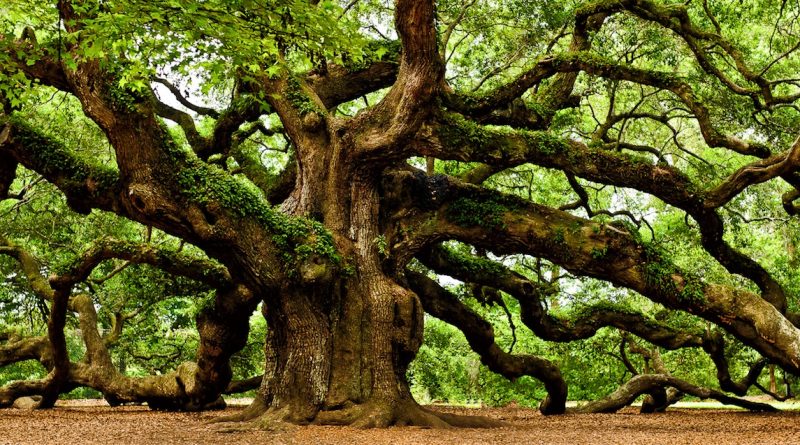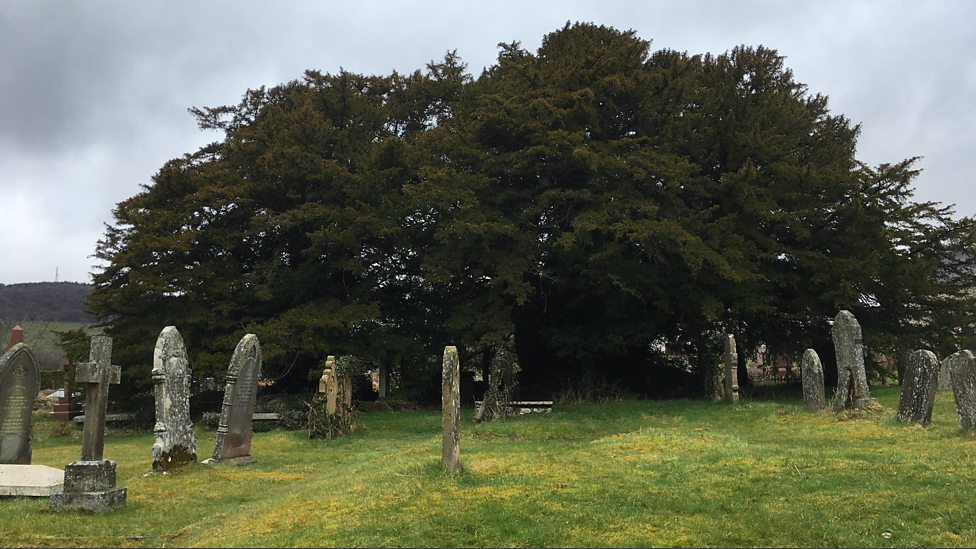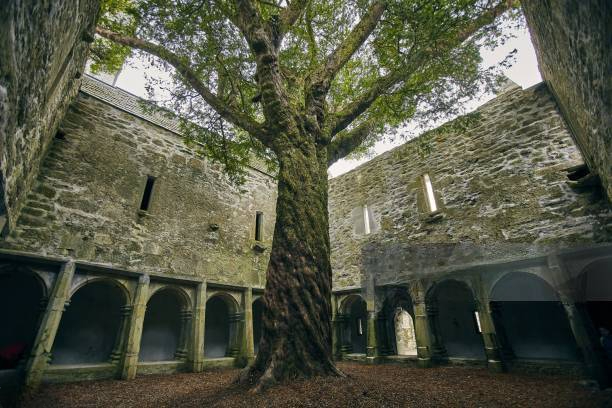The yew, that dark, twisted, enigmatic tree of legend, looms over churchyards across Europe. Yew trees are a common sight, especially in the United Kingdom, yet few people realize just how old many of these great beings really are.
Thought to be the oldest tree in Europe, the yew that stands in the churchyard of St. Cynog’s in Powys, Wales, may be over 5,000 years old. According to the Woodland Trust, it’s in good company – there are over 250 yew trees in the United Kingdom that are classified as “ancient”, meaning that they have been growing for over 900 years.

Yew trees are notoriously difficult to date accurately, and so in 2014 the yew at St. Cynog’s was subjected to a number of different tests, including DNA analysis and ring counting.
Janis Fry, an expert in tree aging, is confident that the tree is the oldest non-clonal tree in Europe, according to The Express. The tests, conducted by the Forestry Institute, concluded that the tree had a ring count of 120 per inch, which would make it around 5,000 years old.

The oldest non-clonal tree in the world, according to official records, is a bristlecone pine in southern California, which has been accurately dated to 5,068 years old. However, it is very difficult to precisely date yew trees, and there are a number of candidates, including the St. Cynog Yew, that may rival even this ancient being.
Until 2014, it was thought that the oldest tree in Europe was the Fortingall Yew, in Perthshire, Scotland, which has been roughly dated to between 3,000 and 5,000 years of age. However, according to The Woodland Trust, the St. Cynog Yew may be even older.

Part of the difficulty in dating yew trees is due to the fact that, with age, the central trunk often splits into two or several main stems, thus preventing accurate dating using the heartwood rings.
This is the case with both the St. Cynog Yew and the Fortingall Yew, which both have fractured trunks. Nevertheless, the trees are otherwise in excellent health and could live for centuries to come.
In addition to their broken, decayed appearance, ancient yew trees in the United Kingdom bear the marks of history. According to The Woodland Trust, a cannonball was found inside the trunk of the Crowhurst Yew in Surrey, England, which is thought to have become lodged there at the time of the English Civil War (1642–1651).

Indeed, if the dating of the St. Cynog Yew is correct, it would have been little more than a sapling at the time of the construction of Stonehenge, and already centuries old when the Great Pyramid of Giza was raised up from the desert. By the time the Romans set foot in Britain, it was already thousands of years old.
Yew trees are found in churchyards all over the United Kingdom, in part because of their ancient mythological significance. They carry strong associations with death and resurrection, and often feature in Celtic and Greek traditions as symbols of decay and regeneration.
This may be due to their evergreen foliage and exceptionally long lives, in addition to their perceived regenerative powers. Yew trees appear to suffer extreme damage and decay, splitting open at the trunk, yet they continue to thrive.

Even before the advent of Christianity, they were planted in spiritually significant locations and used as part of pagan rituals, often involving death and sacrifice. Later, the ancient traditions surrounding yew trees would become merged with Christian practice, and they were incorporated into Lenten and Easter celebrations, symbolizing the death and resurrection of Christ.
Yew trees at Kingley Vale in the South Downs National Park in England are some of the oldest yew trees in the world. They are between 500 and 2,000 years old.
For similar reasons, they were often planted in churchyards, watching over the dead and ensuring their spiritual resurrection.
The twisted, tortured trunks of these ancient trees now stand watch over churchyards and graveyards all over Europe, and with luck, will continue to do so for many centuries to come.








 Photographer Finds Locations Of 1960s Postcards To See How They Look Today, And The Difference Is Unbelievable
Photographer Finds Locations Of 1960s Postcards To See How They Look Today, And The Difference Is Unbelievable  Hij zet 3 IKEA kastjes tegen elkaar aan en maakt dit voor zijn vrouw…Wat een gaaf resultaat!!
Hij zet 3 IKEA kastjes tegen elkaar aan en maakt dit voor zijn vrouw…Wat een gaaf resultaat!!  Scientists Discover 512-Year-Old Shark, Which Would Be The Oldest Living Vertebrate On The Planet
Scientists Discover 512-Year-Old Shark, Which Would Be The Oldest Living Vertebrate On The Planet  Hus til salg er kun 22 kvadratmeter – men vent til du ser det indvendigt
Hus til salg er kun 22 kvadratmeter – men vent til du ser det indvendigt  Superknepet – så blir snuskiga ugnsformen som ny igen!
Superknepet – så blir snuskiga ugnsformen som ny igen!  Meteorite That Recently Fell in Somalia Turns Out to Contain Two Minerals Never Before Seen on Earth
Meteorite That Recently Fell in Somalia Turns Out to Contain Two Minerals Never Before Seen on Earth  Nearly Frozen Waves Captured On Camera By Nantucket Photographer
Nearly Frozen Waves Captured On Camera By Nantucket Photographer  It’s Official: Astronomers Have Discovered another Earth
It’s Official: Astronomers Have Discovered another Earth 